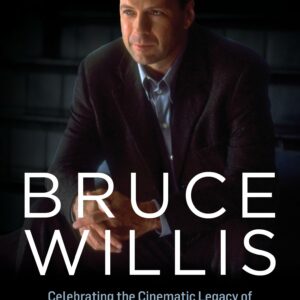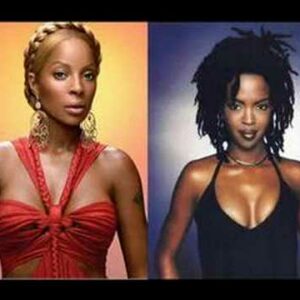Red Sparrow (2018), directed by Francis Lawrence, is a psychological thriller that delves deep into the world of espionage, control, and survival. Based on the novel by Jason Matthews, the film follows Dominika Egorova, portrayed by Jennifer Lawrence, a prima ballerina whose career is tragically cut short. As her life spirals into uncertainty, she is manipulated by Russian intelligence forces into becoming a “Sparrow,” a specially trained seductress tasked with extracting secrets from enemies of the state.
The film is a character study wrapped in the garb of a spy thriller, offering an unflinching look at how power, control, and manipulation can strip individuals of their autonomy, reducing them to mere pawns in political games. Yet, through this journey of entrapment and subjugation, Red Sparrow is equally a story of transformation and reclaiming power. Jennifer Lawrence’s portrayal of Dominika is at the center of this transformation, as she learns to navigate—and eventually subvert—the very system designed to control her.
Symbolism of the Sparrow
The title of the movie itself, Red Sparrow, holds rich symbolic meaning. Sparrows are often seen as humble, unassuming birds, yet they are resilient and resourceful. In literature and mythology, sparrows have been associated with themes of freedom, transformation, and sometimes, entrapment. In Red Sparrow, Dominika’s journey mirrors these dual aspects.
From the outset, Dominika is portrayed as a woman trapped by circumstances beyond her control. Her career-ending injury as a ballerina strips her of her identity and agency. It is here that the sparrow metaphor begins to unfold. She is caught in a cage—her life no longer her own, controlled by her uncle and the Russian government. However, as the story progresses, the sparrow becomes a symbol of her transformation. Just as a bird learns to fly, Dominika begins to learn how to navigate the web of espionage, deceit, and manipulation.
The sparrow also symbolizes survival. In a world where Dominika is continually stripped of her autonomy and reduced to a mere tool of the state, she learns to adapt, strategize, and ultimately reclaim her power. Her ability to endure and eventually outwit her captors is the ultimate demonstration of the sparrow’s resilience. She may be small, seemingly insignificant in the grand scheme of political machinations, but like the sparrow, she becomes a force to be reckoned with by the film’s conclusion.
Colors as Symbols
One of the most prominent symbolic elements in Red Sparrow is the use of color, particularly red. In Western symbolism, red is commonly associated with passion, danger, power, and blood—all themes that are intricately woven throughout the movie’s narrative.
The color red appears repeatedly in the film, beginning with Dominika’s dramatic entrance as a ballerina. Her costumes, the stage lighting, and the blood from her injury all symbolize different facets of her identity. As a ballerina, the red costumes exude passion and beauty. However, the blood that pools around her after her injury serves as a stark reminder of the fragility of her body and her powerlessness in the face of fate.
As Dominika is thrust into the Sparrow program, the color red takes on new meanings. It becomes a symbol of danger and violence, representing the blood spilled in the name of espionage and the physical and psychological abuse Dominika endures during her training. Red also symbolizes the power dynamics at play—both the power exerted over Dominika by her superiors and the power she begins to claim for herself as she learns the art of seduction and manipulation.
Red is not just about danger and power, though; it also represents Dominika’s burgeoning autonomy. As she navigates the labyrinth of espionage, red becomes a symbol of her reclaiming her identity and power. By the film’s conclusion, Dominika is no longer the victim. She has learned to wield the power of seduction, deceit, and strategy, using these tools to orchestrate her escape from the Sparrow program. The red that once signified her subjugation now represents her liberation.
Power Dynamics and Control
Red Sparrow is, at its core, a study of power dynamics—how individuals wield control over others and how those who are seemingly powerless learn to manipulate their circumstances. Symbols throughout the film reinforce these themes, particularly in how characters are visually and narratively positioned in relation to each other.
Throughout the film, Dominika is manipulated by those around her—her uncle, the Russian intelligence officers, and even her fellow Sparrows. Her initial powerlessness is reflected in the cold, sterile environments where she is trained and conditioned, places devoid of warmth or individuality. The lack of personal identity is symbolic of the state’s complete control over her life.
However, as Dominika begins to understand the rules of the game, she learns to subvert these power dynamics. One of the most compelling symbols of this shift is her use of seduction. In the Sparrow program, sex and seduction are tools of control, designed to make agents into pawns who can manipulate their targets. But Dominika turns this on its head, using her sexuality not as a weapon dictated by the state, but as a means of exerting her own control.
By the end of the film, the tables have turned. Dominika is no longer a pawn but a queen on the chessboard, manipulating those who once controlled her. The power dynamics have shifted, and Dominika’s journey is a testament to how symbols of control and subjugation can be transformed into symbols of personal empowerment.
Use of Dance and Physicality
Dance plays a central role in Red Sparrow, both as a literal and symbolic motif. At the beginning of the film, Dominika’s identity is tied to her physicality as a ballerina. The opening scenes, which showcase her breathtaking control and precision on the stage, highlight how her body is her instrument—both her power and her vulnerability.
When Dominika’s ballet career is cut short, her body becomes a battleground. No longer in control of her own fate, she is subjected to physical and psychological training designed to strip her of her autonomy. In these moments, her body is no longer her own; it belongs to the state, to be used and abused as a tool of espionage.
However, just as Dominika’s ballet training was about control, so too is her journey through the Sparrow program. The physicality of her training is designed to break her down, to make her compliant. But instead, Dominika learns to reclaim her body through the very tools meant to control her. She uses her physicality—her sexuality, her beauty, her intelligence—to regain control over her own destiny.
The film’s closing scenes offer a stark contrast to its opening. Where once Dominika’s body was her vulnerability, it has now become her greatest asset. She has learned to use her body not as a tool of submission, but as a weapon of empowerment.
Symbolism in the Protagonist’s Arc
Dominika’s arc in Red Sparrow is one of the most compelling aspects of the film, and much of it is told through the use of symbols. From the sparrow itself, to the color red, to the physicality of dance and movement, each symbol contributes to her transformation from victim to empowered individual.
At the beginning of the film, Dominika is a woman defined by her circumstances—her injury, her dependence on the state, her lack of autonomy. But as the story unfolds, each symbolic element contributes to her growing sense of self. The sparrow, once a symbol of entrapment, becomes a symbol of resilience and freedom. The color red, once representing danger and powerlessness, becomes a symbol of passion and control. Her physicality, once a source of vulnerability, becomes her weapon.
By the film’s conclusion, Dominika has fully transformed. She is no longer the powerless victim, but a woman in control of her own destiny. The final scenes of the film leave the audience with a sense of both closure and ambiguity—Dominika may have escaped the Sparrow program, but her journey is far from over. Yet, through it all, the symbols that once defined her as a pawn have now become the tools of her liberation.
In Red Sparrow, symbolism is not just a storytelling device; it is the heart of the narrative. The film’s exploration of power, control, and autonomy is deeply intertwined with its use of symbolic imagery, making it a rich, thought-provoking piece of cinema that lingers long after the credits roll.





